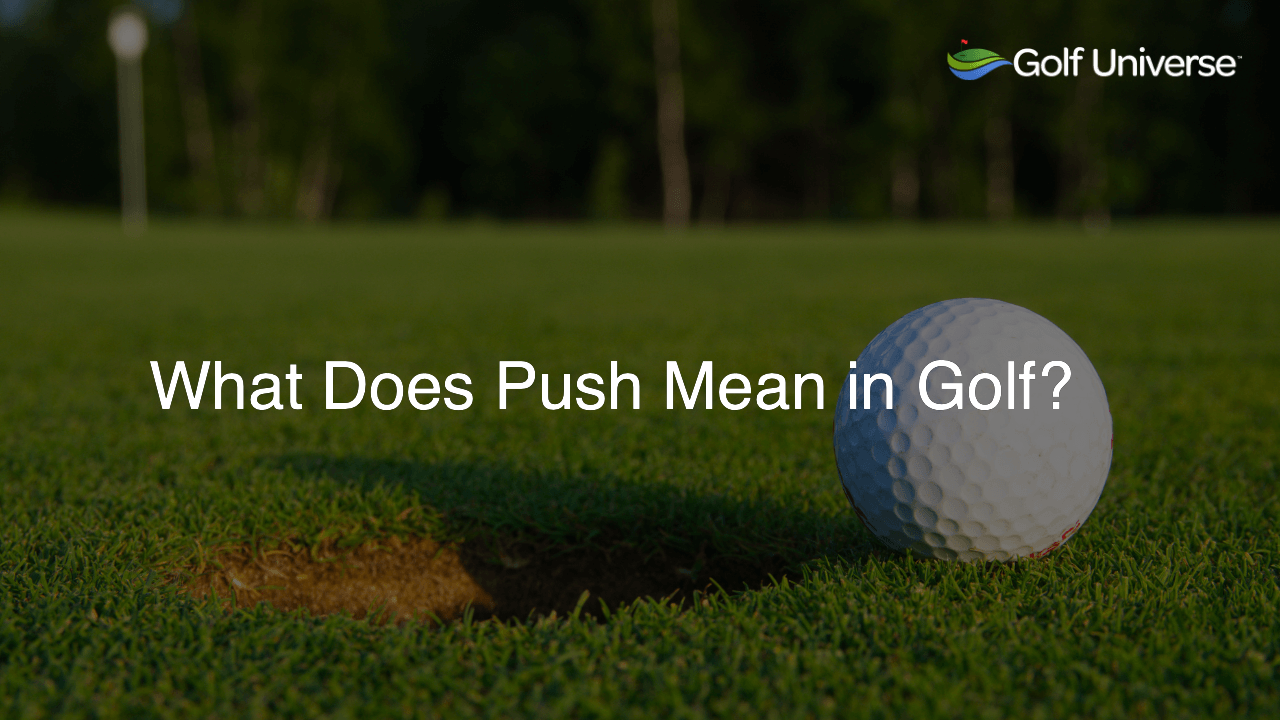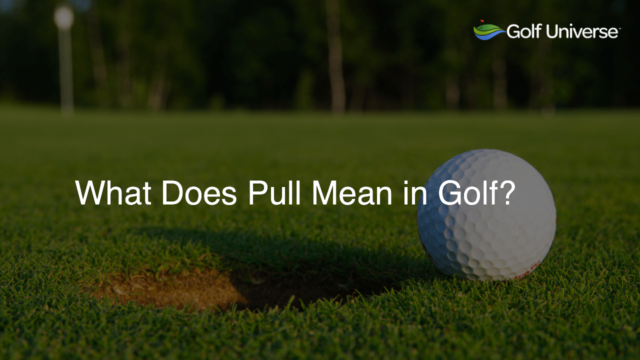In golf, a ‘push’ refers to a shot that starts to the right of the target (for right-handed golfers) or to the left of the target (for left-handed golfers) with minimal side spin, causing the ball to travel in a straight line away from its intended direction. This typically occurs due to an open clubface at impact or a swing path that is too extreme from the inside.
Understanding a Push in Golf
A push is a golf shot that veers to the right of the target for right-handed golfers or to the left of the target for left-handed golfers, without significant side spin. This deviation from the intended path typically results from an open clubface at impact or a swing path that is too extreme from the inside. To properly address the problem, golfers need to understand the common causes and how to fix them.
Recognizing Clubface Position at Impact
An open clubface at the moment of impact can cause a push. For right-handed golfers, the clubface points to the right of the target line, while for left-handed golfers, it points to the left. To rectify this issue, golfers should focus on their grip, ensuring it is neither too weak nor too strong, as either can influence the clubface position at impact.
Assessing Swing Path
A swing path that is too extreme from the inside can also produce a push. This inside-to-out swing sends the ball on a straight path, but in an unintended direction. To correct an inside-to-out swing path, it’s crucial to pay attention to the takeaway, downswing, and follow-through. Golfers should aim for a more neutral swing path to promote straight shots toward their target.
How to Fix a Push in Golf
Adjusting Grip and Clubface
One of the first steps to fixing a push in golf is to assess and adjust the grip. With a neutral grip, more control is established, promoting a square clubface at impact. Golfers should also monitor the clubface position throughout the swing to ensure it remains square with the target line.
Improve Alignment and Stance
Proper alignment and stance are crucial for executing accurate shots. Golfers should position their feet, hips, and shoulders parallel to the target line, while making sure the ball is neither too close nor too far from their body. Practicing with alignment aids, like alignment sticks, can help golfers improve their accuracy.
Focus on Swing Mechanics
Paying attention to swing mechanics is essential for improving overall shot consistency. Practice maintaining correct posture, initiating a smooth backswing, and keeping the downswing on plane. A mirror or video analysis can provide valuable feedback on swing mechanics and offer insights into any areas that need adjustment.
Seek Professional Help
If a golfer continues to struggle with pushes despite efforts to correct them, it may be beneficial to seek advice from a PGA professional. Golf instructors can provide personalized guidance to fix specific issues in a golfer’s swing and help them achieve a more accurate and consistent ball flight.
Common Misconceptions About Golf Pushes
Many golfers often misinterpret pushes as a slice or hook, but it’s important to differentiate between these shot types for effective correction. A push occurs without significant side spin, and becomes a slice or hook only when there is more curve involved. By understanding the differences between a push, slice, and hook, golfers can better address the specific issues in their swing technique.
Golf Universe’s Take on Pushes
Every golfer’s journey to improvement is unique, but at Golf Universe, a blog about golf, we strive to provide comprehensive insights and practical solutions for issues that golfers commonly face. As you work on correcting pushes in your own game, focus on personalized solutions—either through self-analysis or the guidance of a qualified instructor. Every golfer’s journey to improvement is unique, and we are here to help you take the right steps toward a better game.
Expand Your Golf Knowledge With Golf Universe
While eliminating pushes is important for better shot consistency, it’s essential to continue refining your overall golf skills. At Golf Universe, we provide valuable tips, guidance, and resources to enhance your game further. As a comprehensive golf blog, we offer in-depth knowledge about swing technique, equipment recommendations, playing strategies, and more. Subscribing to Golf Universe gives you access to the latest updates, professional advice, and insider secrets that can propel your golf game to new heights.
Frequently Asked Questions
After reading the blog post about pushes in golf, you may still have a few lingering questions. To help clarify further, we have compiled a list of frequently asked questions and their concise answers related to golf pushes and techniques to correct them.
What is the main difference between a push and a slice or hook in golf?
A push refers to a shot that deviates from the intended path without significant side spin, whereas a slice or hook involves more curve, with the ball spinning from one side to another during flight.
How does grip strength affect a push in golf?
Grip strength impacts the clubface position at impact. A weak grip can cause an open clubface, leading to pushes, while a strong grip can contribute to a more closed clubface at impact, potentially causing hooks.
Are there any drills that can help correct pushes?
Yes, participating in golf drills focusing on clubface control, swing path, and alignment can help fix pushes. For example, the gate drill requires placing two tees in the ground, creating a small gate just wide enough for the golf ball to pass through, which can help promote a square clubface and a straight shot.
How do PGA professionals determine if a golfer is struggling with pushes?
PGA professionals use various techniques to assess a golfer’s swing, such as video analysis, launch monitors, and direct observations. They can identify whether pushes are happening due to an open clubface, an extreme inside-to-out swing path, or other factors.
Is it possible to still hit the target while having a slight push in one’s golf shot?
It may be possible to occasionally reach the target with a slight push by compensating for the deviation in aim. However, this is not a reliable or consistent method, and correcting the underlying issues causing the push would lead to more consistent and accurate shots in the long run.











